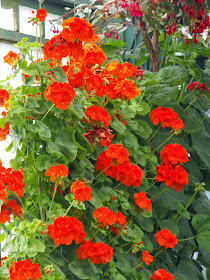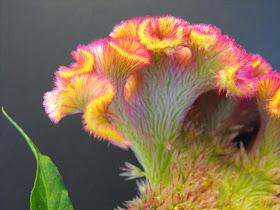I have been working on a host of things since the exams were over. Among these other things are a handful of posts for "Flora and Fauna - Plants and Critters" that have gotten a bit technical. It is very interesting stuff about the plants but I like to verify information with actual primary sources which in this case has meant hunting down scientific journals and text books. Also I split off some stuff and relegated it to one of my other blogs "The Blood of Souls" (which is a blog on etymology, translation and language issues) since it was etymology related and although I have covered etymology in some of my posts this one is a bit more involved and required me to go into some mythology in depth to explain why the plant was given that name ... or rather why the genus was given that name.
Well ... okay it is more speculation since I have not been able to find any source that can confirm the meaning and origin of the genus name. But ... well you will just have to wait until the posts are finished.
I have also been working on the following:
- Revising old posts for accuracy (typos etc.
- Amending the taxonomical information (in accordance with the system that I am adopting)
- Adding references to sources (books, articles and websites as well as direct links to on-line material when I can do so).
- Adding to the glossaries (I may end up merging the glossaries)
- Adding labels to posts
- Adding a "Useful Links / Websites" page with brief summaries of what they contain to help people wanting more information.
- Cross linking with my other Blogs where relevant (mainly the etymology related stuff).
- Researching, verifying and filling in the gaps for common names in other languages
- Restructuring the layout of data so that they are presented in a more uniform manner.
- I have been wondering about working on some translations into French at least. However, there is a translation widget which might make that unnecessary ... although having used these before to translate stuff from other languages into English ... these programmes are not exactly very precise and can give rather stilted if not downright bizarre translation.
- I have some visits to assorted parks and botanical gardens planned which should net a lot of photos and material to research, write about and post. I plan on preparing a lot of draft posts so that when my course resumes all I will need to do will be to click "Publish" when a new post is due. That way I will ensure that I do not have long period with no posts.
- I'm really hoping that I will be able to organise an interview with some agriculturists as well as a visit to some hives because I have been wanting to do some in-depth posts on bees. I might be able to squeeze in some other bugs and critters as well as some other stuff.
- Keep in mind that I also have other things that I need to do over the next three months before the next term start. These range from other research and writing projects and some photography and art projects.
Thank you,


















